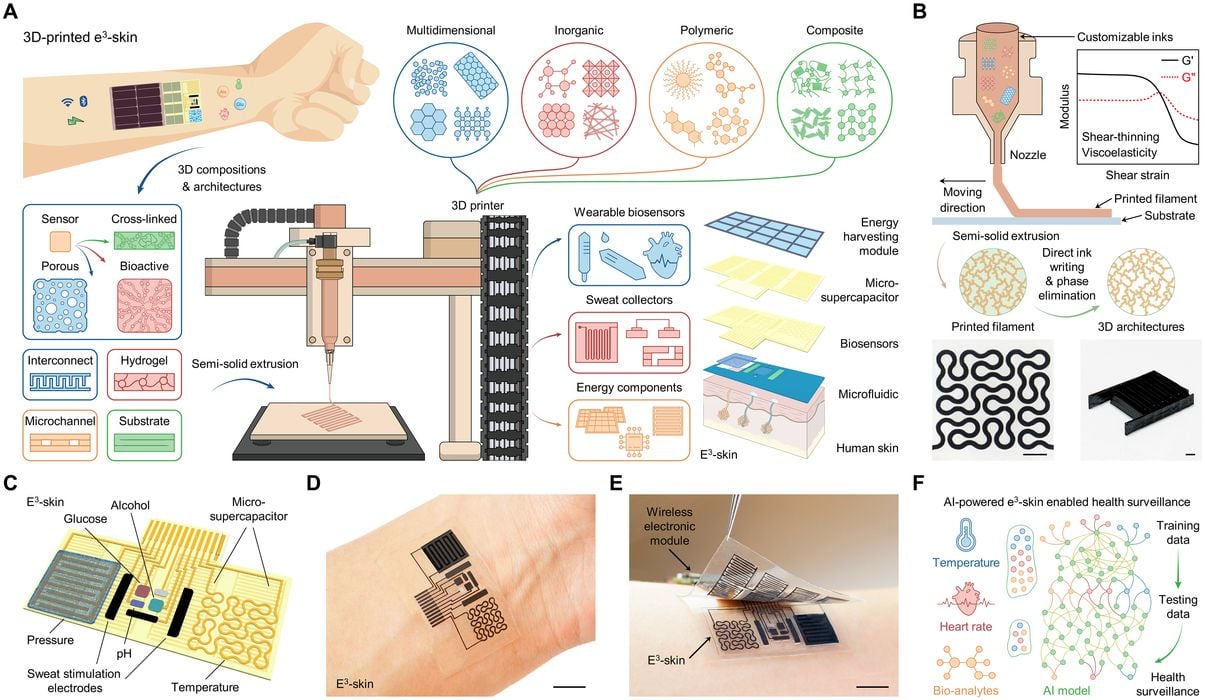
Researchers have developed a way to 3D print an “electronic skin”.
What would you possibly need an electronic skin for? The driver seems to be the increase in the use of wearable technology. As most people now realize, those smart watches we wear contain an increasing number of biosensors. These are used, in combination with software, to provide health and activity monitoring.
However, there are limits to the types of sensors that can be produced, and especially produced at scale economically. The researchers on this work sought to identify a way to lower the cost to produce biosensors.
They succeeded with an unusual 3D printing approach, as they describe here:
“We present an epifluidic elastic electronic skin (e3-skin) with multimodal physiochemical sensing capabilities, which is constructed exclusively using a highly adaptable and versatile semisolid extrusion (SSE)–based 3D-printing technology involving direct ink writing and selective phase elimination.”
You might be wondering what “phase elimination” is all about. It turns out it is a chemical process by which a certain material is removed from the final print. Their input material is a mix of materials, and by removing one of them they can create a porous surface. The porosity allows more contact with the subject and increases the performance of the biosensor.
What are the biosensors? The researchers explain:
“The SSE-based 3D-printed e3-skin is composed of an array of electrochemical sweat biosensors (e.g., glucose, alcohol, and pH sensors) and biophysical sensors (e.g., temperature and pulse sensors), a pair of hydrogel-coated iontophoresis electrodes for localized sweat induction, a microfluidics for efficient sweat sampling, and a micro-supercapacitor (MSC) as energy storage module interfaced with an energy-harvesting device (e.g., solar cell) for sustainable wearable operation. Further integrated with wireless electronic module, the e3-skin could perform prolonged physiochemical data collection from the daily activities.”
They believe the data collected by the biosensors can be leveraged with AI-powered software to develop new insights into the state of the wearer’s health and activities.
If true, then we could see this technology amplified by wearable device makers to make us all just a bit more aware of our health.
Via Science
